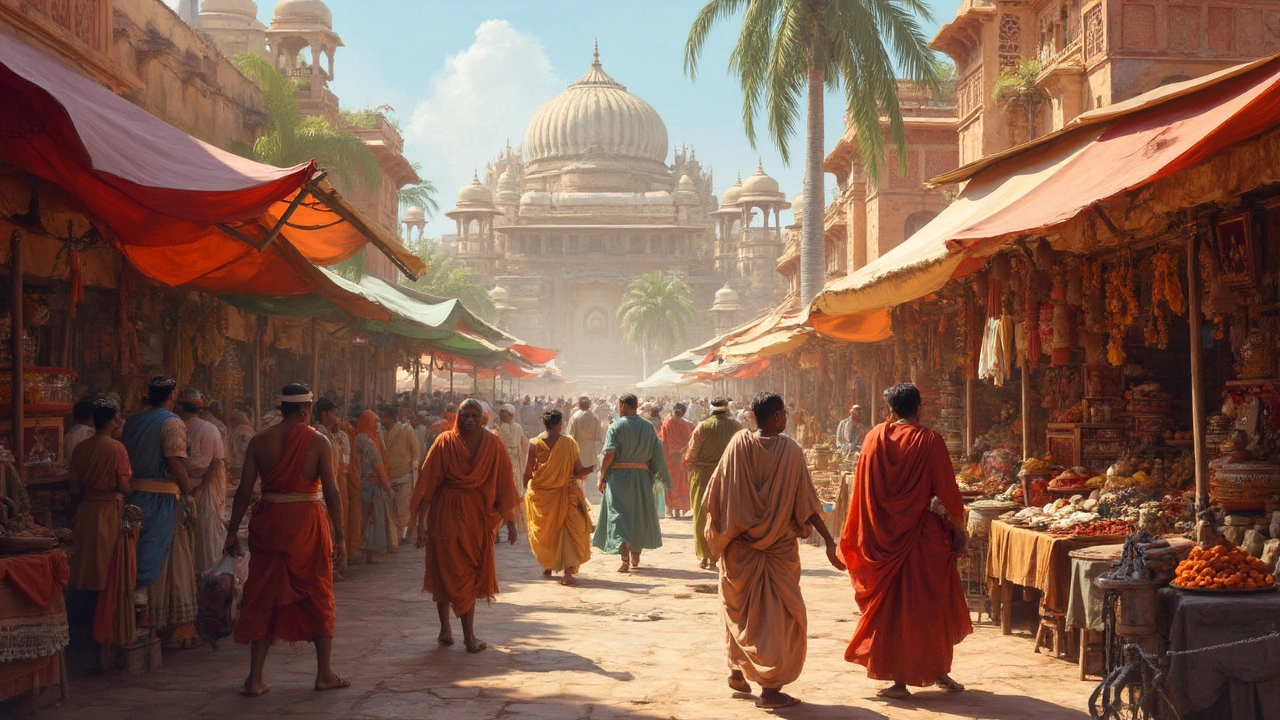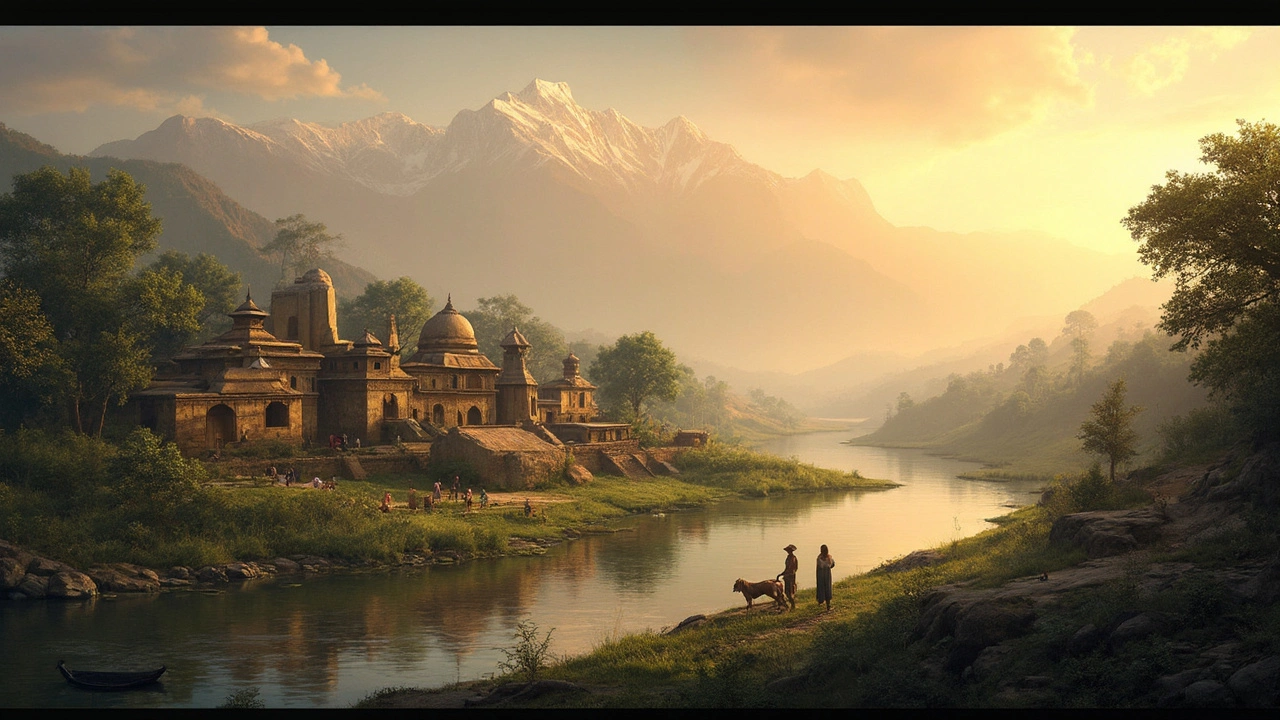Discovering India: Marco Polo's Eye-Opening Journey
 Apr, 1 2025
Apr, 1 2025
Think about the last big journey you took. Now, imagine stepping into the vast and colorful tapestry that is India back in Marco Polo's time. It wasn’t just a trip; it was a revelation. The scents of spices, the clamor of vibrant markets, and the sweeping landscapes were nothing short of magical.
Polo's tales of India capture more than scenery—they paint a picture of an evolving culture teeming with surprises. From merchants showcasing their finest silks to grand palaces reflecting in serene lakes, he saw it all. And it’s these experiences that inspired quotes and stories passed down through generations.
So, what did Polo take back with him? Not just memories but a newfound understanding. His discoveries weren't just about the geography—they were about a people rich in tradition and innovation. Keep reading to see what else unfolded on Polo's adventurous path through India.
The Grand Arrival
Imagine sailing across the open seas for months, only to catch your first glimpse of the Indian coastline—it was an epic moment for Marco Polo. Arriving around 1292, Polo docked along the Coromandel Coast, greeted by a land bursting with color and sound. This wasn’t just a pit stop; India was a destination of dreams with its promise of silk, spices, and soul-stirring landscapes.
One of the most striking aspects of Polo's arrival was the thriving trade that India was known for. Merchant ships bustled back and forth, laden with everything from textiles to rare spices. In fact, India's spices were a hot commodity, making the region a hub for traders far and wide.
- Spices Galore: Pepper, cardamom, and cinnamon were just a few of the spices that made India famous.
- Exotic Textiles: Silk and cotton fabrics were sought after goods, showing the artistic flair and skill of Indian weavers.
- Vibrant Markets: Bustling with activity, these markets were filled with people eager to trade and barter, embodying the essence of India's rich trade legacy.
But it wasn't just about the goods; it was about the people and their incredible hospitality. Polo was met with warmth and curiosity, fellow travelers eager to share their stories and traditions. This mingling of cultures and ideas set the stage for the incredible journey that would follow, one that would inspire countless quotes and tales about this land of wonders.
Exploring the Marketplace
If Marco Polo's tales of India were a painting, the vibrant marketplaces would be the splashes of color catching your eye. Imagine the sensory overload: stalls lining narrow winding streets, each a mini-universe displaying wares from spices to silks. Back in the 13th century, these bustling markets weren't just about trading goods; they were vital hubs of culture and social interaction.
Marco Polo described the markets as buzzing hives of activity where merchants from different parts of the world traded exotic products. It wasn't uncommon to see fabrics that glimmered in the sun due to threads of gold woven into them or hear traders haggling over the price of pepper, then a highly sought-after spice.
The marketplaces were quite advanced even back then. Polo marveled at the well-organized system of weights and measures. Each transaction was conducted using precise scales to ensure fairness, revealing a sophisticated understanding of commerce.
For a guy walking through these markets, it wasn't just about buying or selling. It was a sneak peek into the social fabric of medieval India. Many traders visited for the joy of barter and the chance to hear tales from distant lands. Imagine standing at a spice stall, listening to a story from Africa while the heady mix of cinnamon and cardamom fills the air.
Even today, some of those old markets remain, now with modern twists but still echoing the history Polo might have witnessed. Exploring them offers a unique connection to that past, and who knows, you might stumble upon a hidden gem, just like Marco Polo did centuries ago!

Cultural Encounters
When Marco Polo hit the shores of India, he was in for a cultural rollercoaster. The first thing that caught his attention was the way people dressed—women in colorful saris and men in turbans. It was a world away from the clothes he was used to back home.
Food was another surprise. Polo got a taste of exotic spices that made Italian herbs seem plain by comparison. He was fascinated by dishes like curry, lingering around the bustling markets just to catch a whiff of mustard seeds and chilies dancing in hot oil. Imagine the aroma!
But it wasn't all about sights and smells. Polo also found the local traditions intriguing. Hinduism was the main religion, and he was amazed by the dedication of people celebrating festivals like Diwali, with its vibrant lights and joyful music filling the air. He witnessed elaborate temple rituals he couldn't stop talking about.
Another cool fact? Polo discovered a system of coins different from Europe’s. The locals used shells in the south and gold coins up north. He even said the people weighed their gold like groceries instead of just counting it!
All these encounters opened Polo's eyes to a world full of possibilities. If you're dreaming about traveling or just curious, let these stories from Marco Polo's India travel history inspire you to embrace the unknown. Who knows what cultural gems you might uncover?
Reflections and Inspirations
When Marco Polo journeyed through India, it was more than just a physical venture—it was a passage into the heartbeat of an incredibly diverse culture. Imagine being in his shoes, seeing things that you've never even dreamed of. Pretty mind-blowing, right?
Polo didn’t just witness the usual hustle and bustle; he experienced the profound connections people had with their traditions and daily life. This trip wasn't just about checking out landmarks; it was about understanding how life happened here differently. His observations turned into stories rich with detail—a source of inspiration for many inspirational quotes India you might find today.
The sheer diversity of languages, religions, and architectures left Polo fascinated. His accounts mentioned the coexistence of Hinduism, Buddhism, and Islam, all thriving under one expansive roof of India. This harmony struck him as a remarkable testament to human coexistence.
And here's something interesting: Polo noted that the wealth of the traders, especially those dealing in silk and spices, was astonishing. This was not just about the glitter of gold and jewels, though there was plenty of that. It was about how trade shaped lives and contributed to the cultural fabric, leaving an indelible impression on Polo's mind.
These experiences became anecdotes and tales that sparked curiosity about India all over Europe. Polo’s reflections gave Europeans a peek into a world where cultural richness was the norm. Talk about planting a seed of curiosity!
So, if you ever find yourself dreaming of taking a leaf out of Polo's book, you might start with a simple question: What would your tales of India be?